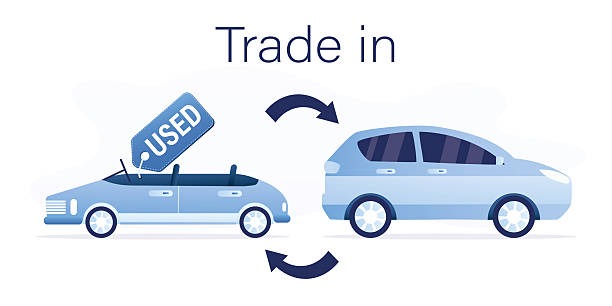Key Takeaways
- Research your vehicle’s value using trusted online tools.
- Thoroughly clean and address minor repairs to boost your car’s appeal and value.
- Have maintenance records available for transparency.
- Obtain multiple offers from different dealerships to leverage the best deal.
- Negotiate each aspect of your trade-in and purchase separately to maximize savings.
- Don’t be afraid to walk away if an offer doesn’t meet your expectations.
Table of Contents
- Research Your Car’s Market Value
- Clean and Detail Your Car
- Address Minor Repairs
- Gather Maintenance Records
- Obtain Multiple Trade-In Offers
- Time Your Trade-In Strategically
- Negotiate the Trade-In Separately
- Be Prepared to Walk Away
- Final Thoughts
Trading in your car is one of the most convenient ways to help finance your next vehicle purchase, but maximizing your trade-in value requires a thoughtful approach. If you want to get the best possible offer, simply showing up at a dealership with your keys in hand won’t do the trick. Doing your homework, presenting your car in the best light, and understanding how dealerships evaluate trade-ins can dramatically increase your payout. Learn more about great trade-in offers and how a proactive approach can strengthen your bargaining position and ensure you get the most for your car.
With the auto market constantly evolving, knowing the latest tactics and what dealers look for can make a significant difference. A well-kept vehicle shows buyers that your car has been reliably maintained and may command a higher price. Buyers and dealers alike will offer more if your vehicle looks and feels cared for, directly impacting its perceived value. Take the following steps to approach your trade-in and maximize your return confidently.
Research Your Car’s Market Value
The first and arguably most important step in the trade-in process is understanding what your car is actually worth. Search for your vehicle’s make, model, year, mileage, and overall condition using resources that offer up-to-date valuation tools. Make sure to enter accurate details and consider both private party and trade-in prices for comparison. Armed with this data, you’ll have a strong statistical baseline before you set foot in a dealership, allowing you to recognize and push back against low-ball offers from dealers. Knowing this fair market value also helps streamline negotiations and prevents you from settling for less than your car is worth.
Clean and Detail Your Car
First impressions play a major role in trade-in negotiations. A spotless vehicle signals dealers that the car has been well cared for, suggesting fewer potential issues underneath the surface. Spend time washing, waxing, and vacuuming your car, paying special attention to small details like windows, mirrors, door jambs, and wheels. Remove all personal belongings and trash to create a tidy and inviting presentation. If possible, consider having your vehicle detailed professionally—dealers and appraisers are often influenced by a car’s apparent cleanliness and condition, which can add real value to your appraisal. Industry experts note that cars in excellent cosmetic shape regularly receive better offers from dealerships, as a prepped vehicle means less work and cost for the next owner.
Address Minor Repairs
Even the smallest visible flaws—like door dings, light scratches, or chips in the windshield—can give dealers reasons to lower your trade-in offer. While some issues may seem insignificant, dealerships often add every imperfection to justify a lower value. Tackling small repairs ahead of time, such as touching up paint, swapping out burned-out light bulbs, and making sure all tires are properly inflated, helps close the door to easy deductions. Check fluids, replace wiper blades, and fix any minor interior concerns, such as a torn seat or missing knob. However, weigh the cost of each repair; expensive or complex fixes aren’t always worth it unless they impact drivability or safety. Focus on affordable repairs that will have the biggest impact on appearance and functionality—dealers expect to do some reconditioning, but the less they have to invest, the more generous their offer will likely be.
Gather Maintenance Records
Dealers and private buyers alike want confidence that the car they’re buying has been properly maintained. Collect and organize records for regular services such as oil changes, brake inspections, tire rotations, filter replacements, and any major part replacements. Having a complete, well-organized record of your car’s maintenance history demonstrates responsible ownership and makes the vehicle more appealing. Presenting this documentation to the dealership provides transparency and builds immediate trust, showing you have nothing to hide about your car’s history. Digital or hardcopy receipts work equally well, but the key is to present them in an order that’s easy to review. Vehicles with a documented service history often receive higher appraisals and can sometimes help offset concerns about age or higher mileage.
Obtain Multiple Trade-In Offers
One of a car owner’s biggest mistakes is accepting the first trade-in offer, simply because it feels convenient. However, values on trade-ins can vary widely from dealer to dealer, so it’s critical to shop around and collect multiple written appraisals. Visit at least three dealerships and, if possible, consider offers from national car buyers or online services for a broader perspective. Use these quotes when negotiating—dealers are usually eager to match or beat an offer if it means closing a deal with you. This step ensures you don’t leave money on the table and gives you leverage to negotiate from a position of strength. Regional demand or brand preferences can influence values, so seeing a range of offers gives you a clearer idea of your car’s worth.
Time Your Trade-In Strategically
Believe it or not, the timing of your trade-in can have a major impact on how much you get. For example, convertibles often fetch higher values in the spring and summer, when the weather is ideal for open-top driving. Pickup trucks and SUVs may be in higher demand during the winter or after severe weather events. In addition, dealerships typically have sales targets they try to hit at the end of the month, quarter, or year, so trading in during these periods can help you get a more attractive offer. If you notice car lots are full, or the specific model you own is in short supply, it could be a great time to negotiate. By timing your trade-in with market trends and dealership cycles in mind, you can ensure that you’re making your move when demand is highest and offers are most competitive.
Negotiate the Trade-In Separately
It’s common practice for dealerships to combine negotiations for your trade-in and the new car purchase, but doing so can muddy the numbers and make it difficult to spot a good deal. Insist on negotiating your trade-in value first and independently from the price of your new car. If a dealership tries to blend the numbers, focus the conversation squarely on your current vehicle’s worth until you have a firm, written offer. Only then should you talk numbers for your next vehicle. This method prevents the dealer from inflating the new car’s price or lowballing your trade to pad their margins. By keeping each part of the deal transparent, you maintain leverage throughout the process and maximize your overall savings.
Be Prepared to Walk Away
If there’s one principle central to successful negotiations, it’s the willingness to walk away from the table. Having a strong sense of your car’s true market value—backed by research and competing offers—gives you the freedom to leave if you sense a deal isn’t fair. While trading in at a dealership is fast and convenient, don’t feel pressured to accept an offer that exceeds your expectations. Sometimes, selling privately or to a specialized buyer may yield better results, though it typically takes more time and effort. Weigh the trade-off between convenience and value, and don’t be afraid to start the process over if you’re not satisfied with the numbers you’re seeing.
Final Thoughts
Getting the best trade-in value for your car doesn’t come down to luck—it’s about being proactive, strategic, and willing to negotiate. Clean and repair your car, bring your maintenance records, and never settle for the first offer without exploring other options. Know your car’s true value with research and hold strong during negotiations. By following each essential step in this guide, you’ll be well-equipped to secure the maximum return on your trade-in and turn your current vehicle into a valuable asset toward your next one.






